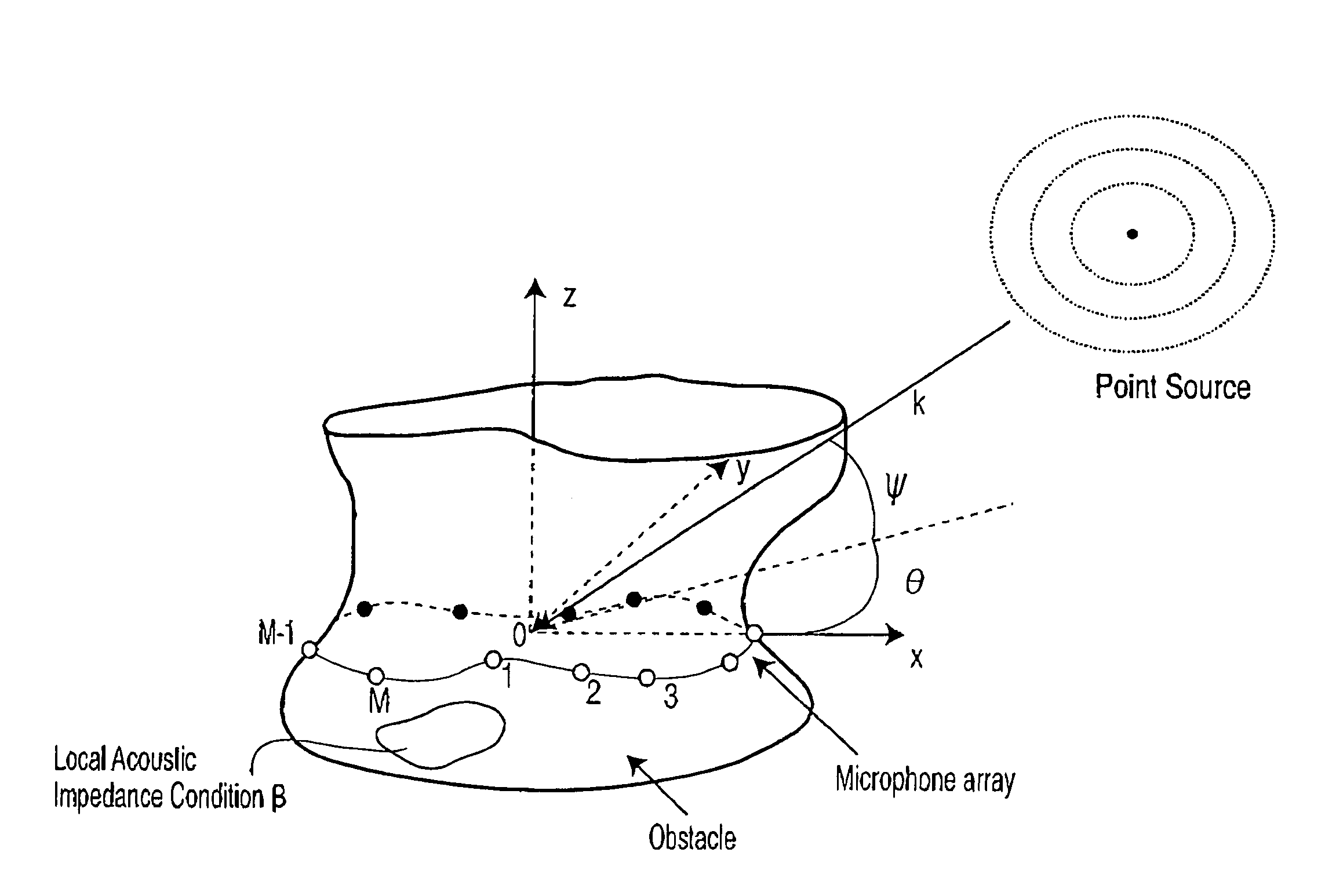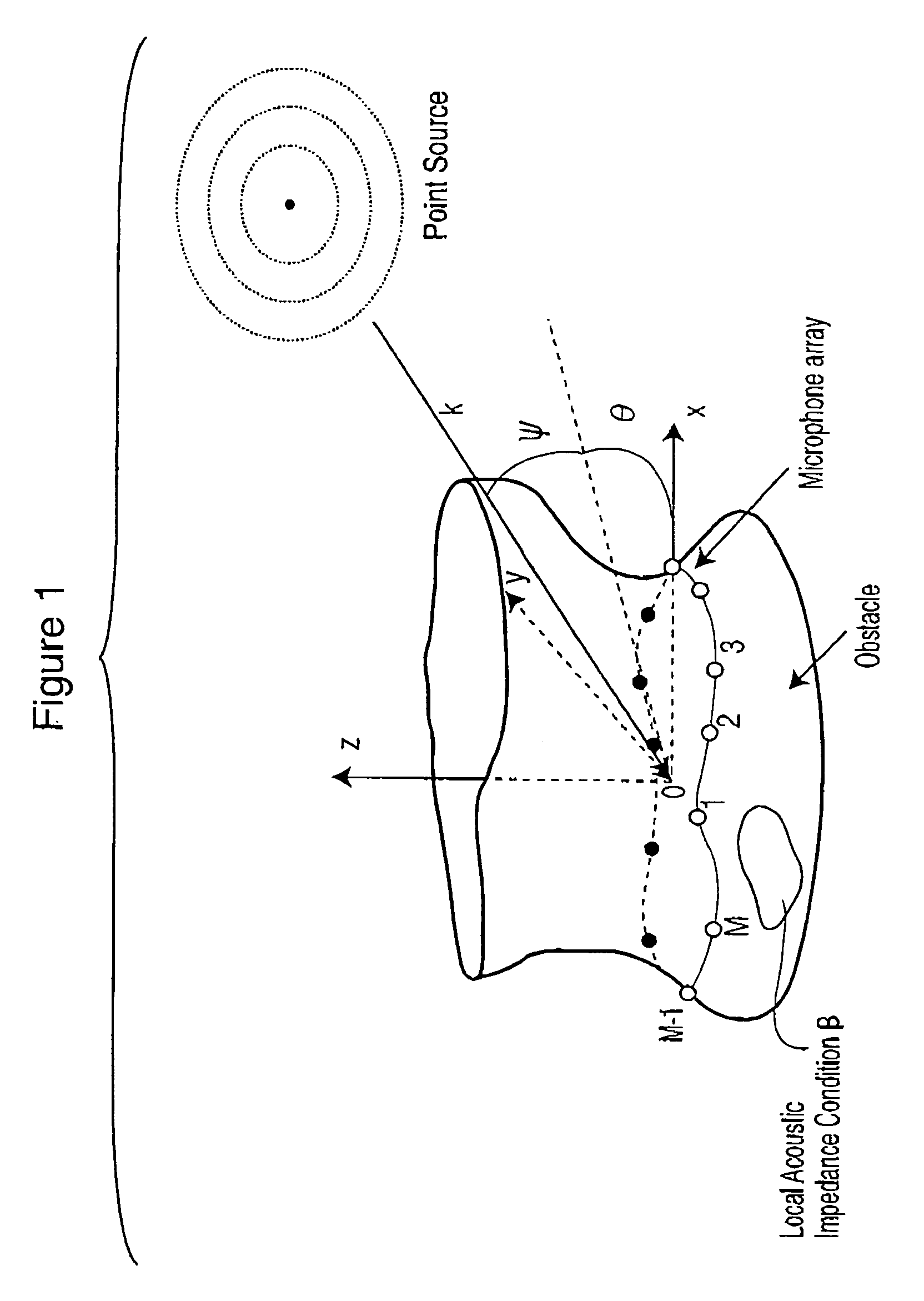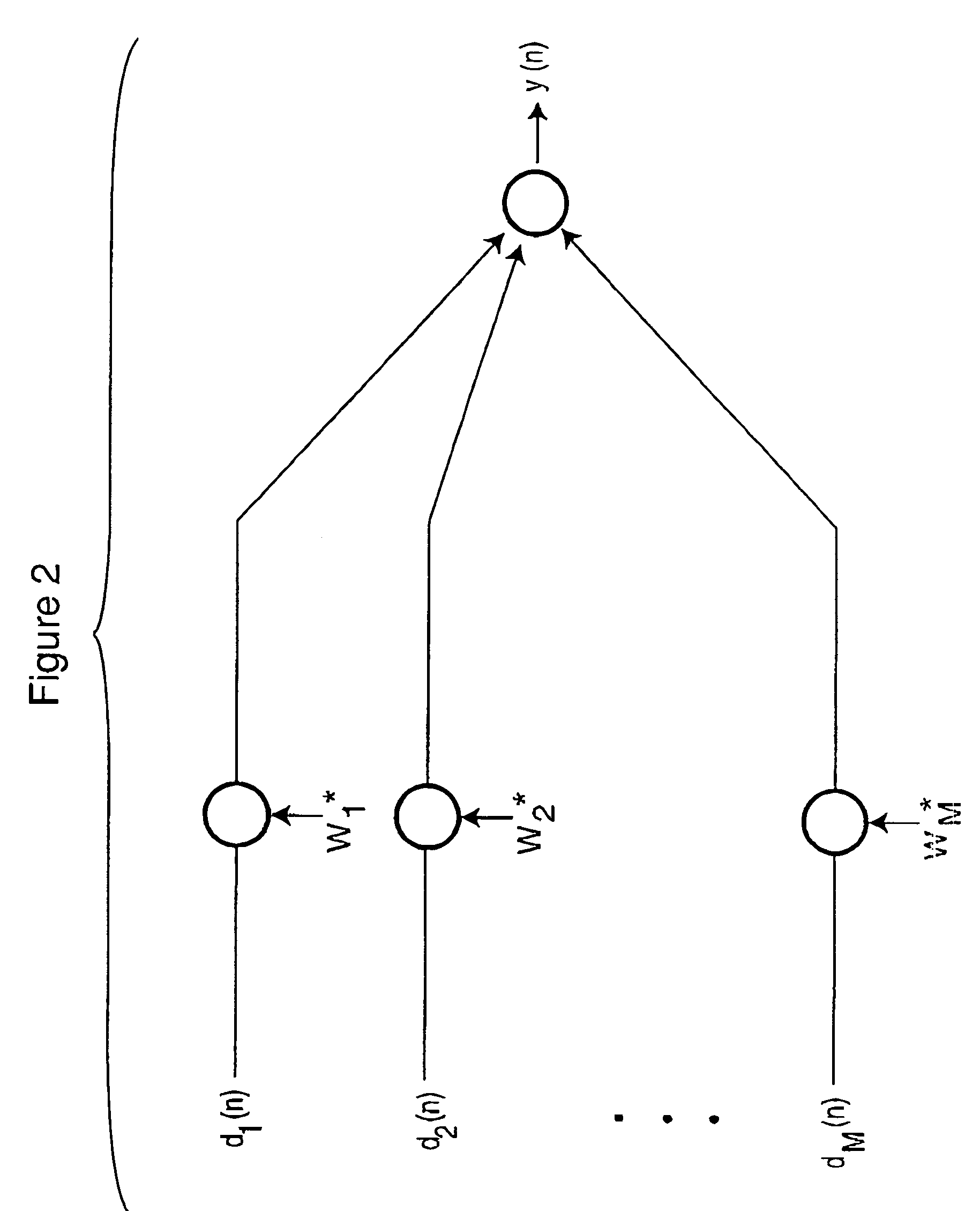Method of broadband constant directivity beamforming for non linear and non axi-symmetric sensor arrays embedded in an obstacle
a constant directivity, beamforming technology, applied in the direction of transducer casings/cabinets/supports, frequency/directions obtaining arrangements, transducer circuits, etc., can solve the problem of only providing redundant information, reducing the spacing between sensors under /2, and posing loss of “look” direction. the effect of preventing the loss of “look direction
- Summary
- Abstract
- Description
- Claims
- Application Information
AI Technical Summary
Benefits of technology
Problems solved by technology
Method used
Image
Examples
Embodiment Construction
[0076]The following table contains the different notations used in this specification, from which it will be noted that the frequency dependency for matrices, vectors and scalars, has for the most part been omitted to simplify the notations. Any other specific notations not appearing in Table 1 are defined in the specification.
[0077]
TABLE INotationsNOTATIONSdcomplex vector (column vector)dicomplex vector ith componentdi*complex conjugate of the vector ith componentdHd Hermitian transpose (line vector)dN complex vector (column vector) index Ndθcomplex vector (column vector) index θRComplex MatrixRHComplex Hermitian transpose MatrixIIdentity matrixWHdHermitian productωCircular frequency (=2 πf f: frequency in Hz)
[0078]FIG. 1 shows an obstacle, which may or may not contain local acoustical treatment on the surface thereof and a sensor array of M microphones on the surface. A point source of sound is located in the k direction at an angle θ in the x-y plane and an angle ψ in the z plane...
PUM
 Login to View More
Login to View More Abstract
Description
Claims
Application Information
 Login to View More
Login to View More - R&D
- Intellectual Property
- Life Sciences
- Materials
- Tech Scout
- Unparalleled Data Quality
- Higher Quality Content
- 60% Fewer Hallucinations
Browse by: Latest US Patents, China's latest patents, Technical Efficacy Thesaurus, Application Domain, Technology Topic, Popular Technical Reports.
© 2025 PatSnap. All rights reserved.Legal|Privacy policy|Modern Slavery Act Transparency Statement|Sitemap|About US| Contact US: help@patsnap.com



